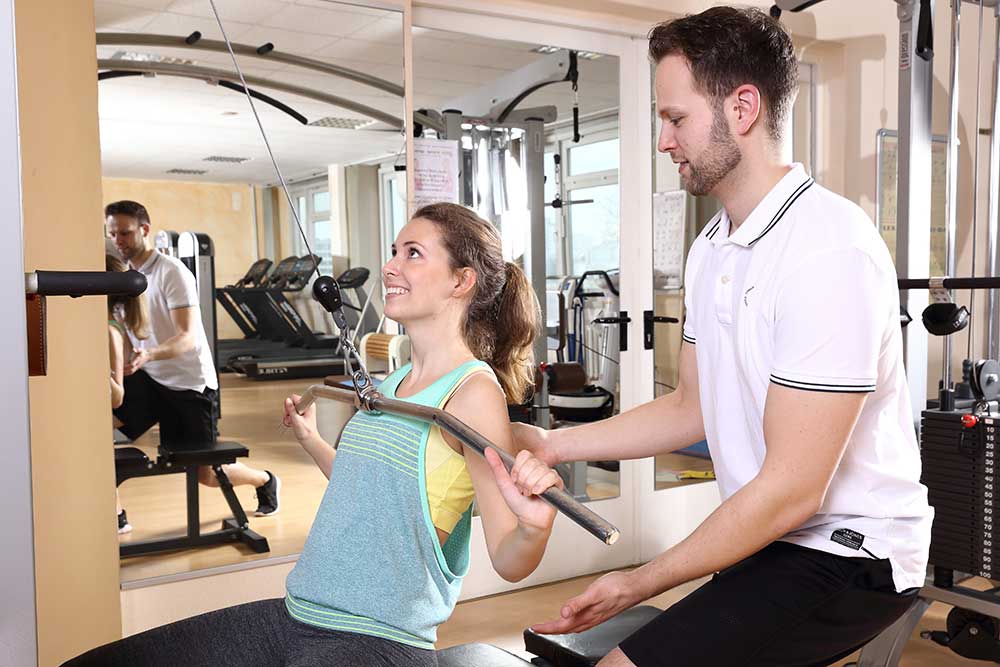Disclaimer: The information on our website is provided for general information purposes only. We make no representations or warranties of any kind, express or implied, about the completeness, accuracy, reliability, suitability or availability with respect to the website or the information contained on our website for any purpose. Any reliance on such information is therefore strictly at your own risk and we are not liable for any damages or losses arising out of or resulting from your reliance on any information contained on our website.
A physical therapy assistant helps patients that are healing from illnesses or injuries regain movement and manage pain under the supervision of a physical therapist. They provide direct care of the patient such as facilitating specific exercises, stretching, or teaching patients how to use prescribed equipment. Watch a video to learn what a physical therapy assistant does.
How to Become a Physical Therapy Assistant

Most states require a physical therapy assistant to have an associate’s degree from an accredited physical therapist assistant program. These programs normally last 2 years and have both clinical and classroom study experience. Employers may want an applicant to hold a certificate in CPR and other first aid courses.
In addition a physical therapy assistant must also pass a licensure exam after graduating from an accredited program to practice. It is called the National Physical Therapy Exam and is administered by the Federation of State Boards of Physical Therapy. Some states also require applicants to pass additional state-administered exams and meet other state-mandated requirements. Check with your state board for specific requirements.
Job Description of a Physical Therapy Assistant
A physical therapy assistant (PTA) helps the physical therapist perform the duties involved in patient care of those recovering from an illness or injury. PTA implements patient/client interventions, document information related to the treatment provided, and change therapy interventions as needed to progress the patient as directed by the physical therapist or to ensure their safety and comfort. They typically observe the patient from the beginning until the end of treatment and document their findings and then inform the physical therapist.
They help patients do exercises that are specific to their care and use other methods like stretching and massage in their treatment sessions. They help with balance training, ambulation, and other supervised methods of treatment. They educate the family members and the patient in after-care treatment before they discharge from a medical facility.
They typically treat patients of all ages, from babies to senior citizens, who have health-related conditions or injuries that limit their abilities to move and perform functional activities. They work in occupational, speech, physical, and audiologist therapy facilities as well as hospitals. Some work in nursing care facilities, home health services, and a few work in physicians offices. A physical therapy assistant works long hours, normally full-time, and can be vulnerable to back injuries from lifting heavy patients and equipment.
Physical Therapy Assistant Career Video
For patients recovering from injuries or illness the work to regain lost abilities or get relief from pain is supported by physical therapists, assistants, and aides. These healthcare workers have the stamina, compassion, and skills to help patients get back on their feet.
Working under the supervision of physical therapists, physical therapist (or PT) assistants provide direct care to patients using massage, exercises, and specialized activities such as gait and balance training. They document patients’ progress and report their observations to the physical therapist. To ensure progress is maintained after treatment, PT assistants also educate patients and their families about follow-up.
Physical therapist aides prepare the treatment area for physical therapy, clean and set up equipment, and assist patients moving to and from treatment areas. Aides also order supplies, schedule therapy sessions, and complete insurance forms.
Most assistants and aides work in physical therapists’ offices or hospitals. They are in motion much of the day to see patients, set up equipment, and lift and move patients when needed. Physical therapist assistants need an associate’s degree from an accredited program, along with a state license or certification. Aides usually need a high school diploma or equivalent, and can expect to learn clinical skills on the job. PT assistants and aides help bring recovery goals within reach and supporting patients through discouragement, fear, and pain.
Article Citations
Bureau of Labor Statistics, U.S. Department of Labor, Occupational Outlook Handbook, Physical Therapist Assistants and Aides.
National Center for O*NET Development. 31-2021.00. O*NET OnLine.
The career video is in the public domain from the U. S. Department of Labor, Employment and Training Administration.

